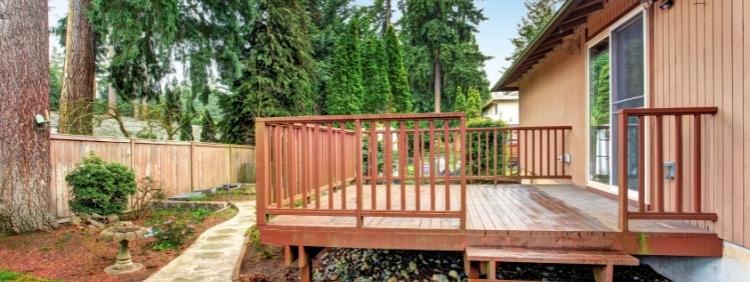3 Reasons Carpenter Ants Are Invading Your Deck

Carpenter ants love damp, rotted wood. Typically, they make their homes in hollowed-out trees, but they have been known to make a colony inside a home or on a deck. Carpenter ants are an annoyance, but they usually don’t bite, nor do they spread disease. They can infest food and don’t look particularly appetizing when they’re crawling around your kitchen. Carpenter ants don’t eat wood, but their strong mandibles hollow out channels in wood to build nests and colonies, weakening the structural integrity of your home and deck. Professional carpenter ant control is usually required to ensure you get the colony removed from your deck or home. Here’s why you might see carpenter ants.
There Is Food On Your Deck
Ants, like most pests, are constantly on the search for food and water. If your deck is close to a food source, such as your garbage bins or kitchen, you might see carpenter ants roaming your deck. Prevent infestations by keeping your yard cleaned up and eliminating access to food and water.
Nearby Colony
You can see carpenter ants on your deck if there is a colony nearby. They may just be looking for food and water, but they might be scoping out a new home. Ants can travel up to 200 metres to search for food.
The Wood Is Wet
Carpenter ants prefer to make their homes in decaying, damp wood. If some of your deck gets wet, it can be a way in for the ants. They generally won’t start a colony in hardwood. Their mandibles may be strong, but they will take the easy way to create a nest.
How to Identify Carpenter Ants
Carpenter ants, termites and other types of ants can appear similar in nature. To an untrained eye, it can be difficult to correctly identify small insects. Carpenter ants can grow up to one-half-inch long. The queen can be up to an inch long. They are generally black in colour, but you can also find red and yellow carpenter ants and some can be a combination of colours. Carpenter ants can bite. Their antennae are elbowed, unlike termites, which have straight antennae. Worker carpenter ants don’t have wings, but reproductive carpenter ants do have wings and are sometimes mistaken for termites. The treatment for each insect is different, so make sure to correctly identify the insect.
Prevent Carpenter Ants From Making a Colony
You have to share the outdoors with all types of pests, but that doesn’t mean you have to make your space inviting. Prevention of carpenter ants is similar to prevention of other pests. We recommend:
- Removing dead tree limbs and stumps off your property.
- Storing firewood away from your home. Keep firewood dry.
- Removing sources of water around your home. Watch for small leaks in your basement and crawl spaces, because pests will take any water as an invitation.
- Inspect your home for gaps and cracks where pests can get through. Seal those up to prevent pests in your home.
- Directing rain gutters away from your home. Keep gutters clean to avoid buildup of debris and water.
- Don’t leave cat or dog food outside overnight.
How to Get Rid of Carpenter Ants
Finding carpenter ants on your property isn’t enough to be worrisome, as carpenter ants live outside. Don’t panic, but do get your home inspected. The problem is when the ants have made their home inside your deck or home. Colonies can easily hide, too. Making the scope of the problem larger than initially thought. Residential pest control services have newer and efficient treatment that controls the entire population without harming your children or pets.
Contact Truly Nolen for more information about carpenter ant control.